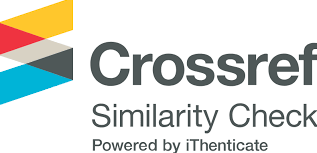Determination of hot-pressing technology parameters for overlaying Red Oak veneers on Acacia hybrid finger joint boards
Keywords:
Acacia hybrid finger joint boards, veneer overlaying technology,, wood-based panels,, surface bonding strength, Oak veneersAbstract
Veneer overlaying technology is the final important step in the production of veneer overlayed wood-based panels. The bonding strength b etween veneers and wood-based panels’ surfaces is influenced by several factors such as pressing parameters (Pressure, Temperature, and Time), types of resin, veneers, and substrates. This study has determined the technology parameters for overlaying red o ak veneers (0.4 mm thickness) on finger joint boards’ surfaces made from Acacia hybrid with a thickness of 12 mm bonded by Melamine urea formaldehyde (MUF) is P = 0.7 MPa; T = 115 o C; τ = 3 minutes with the modulus of rupture (MOR) of 68.2 MPa, and the modulus of elasticity (MOE) of 8.8 GPa which are higher than that of finger joint boards without overlaying veneer 5.6% and 4.5%, respectively. The bonding strength between veneers and surfaces of finger joint boards increased with the increase in processing time, subsequently deceased with the continuous increase in pressing time At the pressure of 0.7 MPa, the bonding strength increased from 1.27 MPa to 1.41 MPa with the increase in pressing time from 2 minutes to 3 minutes, respectively, and then this value decreased to 1.36 MPa with pressing time continuously increasing to 4 minutes. With the resin spread of 100 g/m 2 , The free formaldehyde content released from the surfaces of the finger joint board overlayed veneers on both surfaces is 2.71 mg/L which meets the E2 level according to the Chinese standard GB 18580 - 2001.
References
1. TCVN 11906:2017: Ván gỗ nhân tạo - Xác định độ bền bề mặt.
2. TCVN 8048 - 3:2009: Gỗ - Phương pháp thử cơ lý - Phần 3: Xác định độ bền uốn tĩnh.
3. TCVN 8048 - 4:2009: Gỗ - Phương pháp thử cơ lý - Phần 4: Xác định mô đun đàn hồi uốn tĩnh.
4. TCVN 11899 - 4:2017: Ván gỗ nhân tạo - Xác định hàm lượng formaldehyt phát tán - Phần 4: Phương pháp bình hút ẩm.
5. Trần Văn Chứ, Trần Ngọc Thiệp, 2003. Trang sức bề mặt ván nhân tạo. Nhà xuất bản Lâm nghiệp Trung Quốc.
6. Brandt, J. P., and Shook, S. R., 2005. Attribute elicitation: Implications in the research context. Wood and Fiber Science 37(1), 127 - 146.
7. Chung Y. Hse, Todd F. Shupe, Hui Pan và Fu Feng, 2012. Veneer-Reinforced Particleboard for Exterior Structural Composition Board. FOREST PRODUCTS JOURNAL 62(2):139 - 145.
8. J. Martins, C. Coelho, J. Ferra, P. Cruz and L. Carvalho, 2012. Low formaldehyde emission MDF overlaid with wood veneer: Bonding problems assessment. Article in International Wood Products Journal, May 2012.
9. Humphrey, P., 2009. Out line standard for adhesion dynamics evaluation employing the ABES (Automated Bonding Evaluation System) Technique. Proc. 2009 Int. Conf. On Wood adhesives proceedings, USDA Forest Service, Forest Products Laboratory and Forest Products Society. Lake Tahoe, NV, USA, September
, 213 - 223.
10. Limin Guo, Ning Yan và Qingwen Wang, 2016. Decorating wood flour/HDPE composites with wood veneers.
11. Ratnasingam, J., Loras, F., Ark, C. K., and Latib, H. A., 2020. Success factors of wood veneer as an overlay material for panel-based furniture manufacturing in Malaysia. BioResources 15(1), 1311 - 1322.
12. Tamami Kawasaki, Min Zhang, Shuichi Kawai, 1999. Sandwich panel of veneer-overlaid low-density fiberboard. J Wood Sci, 45: 291 - 298.
13. Xiong Xian-Qing, Qian Wenting, Fang Lu, Wu Zhihui, Wang Feng, 2016. Produccing process for veneer decorative straw particleboards. WOOD RESEARCH 61 (3): 465 - 474.
14. Ying Wu, Jianying Xu, Lishu Deng, Yu Su, Jiaying Liang, and Xinfeng Wu, 2019. Modified High-density Polyethylene Fiem as the adhesive for veneer overlaying of wood-based panel, BioResources 14(4): 7840 - 7851








